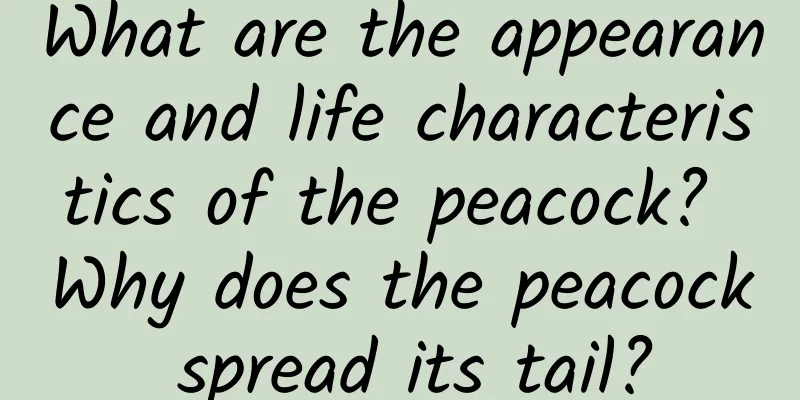|
In Chinese culture, Pixiu (pi xiū) is a mythical beast with a unique image and symbolic meaning. It means to attract wealth and treasure, and to eat without eating. However, for our weight, switching to "pixiu mode" is a bit troublesome!
Just like, you just had a spicy hot pot with your friends, and when you got home and stepped on the scale, the number kept going up. You thought to yourself: "What's going on? Others eat more than me, why am I the one who is fat!" Or on weekdays, we look at the slim TA who keeps eating snacks, and mutter in our hearts: "I'm so envious! Why do we eat the same amount of food, but why am I always the fatter one?"
Don't worry, it can be said that this is not God's partiality to you, but a joint "planning" of genes and microorganisms hidden in our bodies. We now know that obesity is not as simple as not being able to control your mouth or being too lazy to move. Many times, our genes have already preset a written "script", and in this script, there are some wonderful foreshadowings. Today, combined with this newly published interesting paper - "The Microbiota and Evolution of Obesity", published in "Endocrine Reviews" - we will talk about why we "get fat even if we drink water!" from three hypotheses.
1. The thrifty gene hypothesis: the body’s “food storage expert”
1. What is a thrifty gene?
In 1962, geneticist James Neel proposed the Thrifty Genotype Hypothesis. The idea behind this hypothesis is that the genetic system is a survival secret that our ancestors evolved during famine: every bite of food eaten must be efficiently converted into energy and stored. Especially for humans at that time, when natural hunting was extremely difficult and food was scarce, this ability was like carrying a power bank with you, which could save lives at critical moments.
2. The thrifty gene is a stingy "piggy bank"
It’s like your body’s stingy gene housekeeper, who stares at every piece of cake you eat, stores it, and locks the door of the fat storage cabinet while muttering to himself: “Not a single piece can be lost, and none of this can be wasted! What if there’s no food tomorrow?” But the problem is that famine basically doesn’t happen in our peaceful life now, but this gene housekeeper has not kept up with the times, and the result is: if you store too much, you have to store more, and keep saving...
3. The modern troubles of the thrifty gene Under the temptation of a wide variety of snacks in the supermarket, the thrifty gene will completely let go of itself. It keeps "saving", while your scale is firmly upward. You may want to KEI it a few words, but it remains unmoved and continues to stick to its principles: "This is all for your own good!" It is like a Pixiu, hoarding fat while sighing: "I have saved food for you, why don't you thank me?"
2. Drift hypothesis: the “slacking soldier” in the castle
1. What is the drift hypothesis?
In 2007, scientist John Speakman proposed the Drifty Gene Hypothesis, which states that obesity genes have no special "use" and were not eliminated during human evolution because of the reduced risk of predation.
Because early humans lived in the wild, obesity may increase the risk of being preyed on, because fat prey run slower and are easy targets for predators. But as humans mastered weapons, fire, and teamwork skills, the risk of predation dropped sharply, and genes began to "let themselves go", allowing the upper limit of weight to become higher and higher. But with the accumulation of wisdom and knowledge, the emergence of weapons, fire, and teamwork, humans quickly stood at the top of the food chain. Stand out from the crowd! The sharp drop in predation risk allowed those genes that promote obesity to sneak into the team like "slacking soldiers".
2. The “Large Column” of the Slacking Gene
If our genes are a castle, then the soldiers used to remove the "fat" genes every day to make themselves run faster. However, when the foreign enemies disappeared, these soldiers began to be lazy and even allowed some "fat" genes to enter and help defend the castle. These soldiers would say, "Hey, since the castle is safe and there are brother troops, let's drink some tea and fish." As a result, the door of genes was instantly opened, and the obesity genes rushed in.
3. The evolution of drift hypothesis Although this theory explains part of the problem, some people point out that "random drift" alone cannot fully explain the phenomenon of obesity, because environmental and cultural factors are equally important.
3. New hypothesis: metabolic inflammation hypothesis: the “civil war” of the immune system
1. What is the metabolic inflammation hypothesis?
The Metaflammation Hypothesis holds that obesity is not only the result of eating more and exercising less, but may also be a side effect of an overreaction of the immune system. In human evolution, the immune system needs to constantly fight against diseases, especially in ancient environments where pathogens are rampant. In order to protect the body, the immune system triggers a series of inflammatory responses. These responses not only fight against some pathogens, but also "fight" with fat metabolism forces, ultimately leading to fat accumulation.
2. Cellular Protest
The immune system is sometimes like a group of nervous soldiers, always thinking that fat cells are "the spy", so they fire without mercy. Fat cells are forced to store more energy to prepare for war, and the immune system has no intention of stopping the war - it just keeps going.
It’s like the fat cells are crying out in grievance: “I’m just an innocent storage device, why do you always target me?” And the immune system is roaring: “Stop talking nonsense, you are the enemy! Charge!”
3. The practical significance of metabolic inflammation This hypothesis does explain why some inflammatory diseases and obesity often occur together. But it also reminds us that health management cannot only look at the surface, but also pay attention to the "balance" inside the body.
4. The Behind-the-Scenes Role of Gut Microbes
1. Intestinal microorganisms: your invisible partners. The latest research shows that our intestinal microorganisms may be the "pusher behind the scenes" of obesity. Because they are not only responsible for breaking down food, but also interact with the immune and metabolic systems, and can also affect the brain and nerves through various signal molecules. Some microorganisms can help us burn fat, while others will focus on hoarding energy.
2. The "off-tune singer" in the choir
If you compare the intestinal microorganisms to a choir, most members are singing the main tune, but there are always some "off-tune singers" who specifically send excess energy to fat cells. The result is: you get fat.
3. Wisdom in diet In our traditional diet, we emphasize "grains for nourishment" and "light diet", which is actually very helpful for the balance of intestinal microorganisms. Increasing the intake of dietary fiber and good natural and environmental probiotics will not only allow microorganisms to coexist harmoniously, but also help us control our weight.
Finally: Redefining fat and thin From thrifty genes to drift hypothesis, to metabolic inflammation and intestinal microbes, we see that obesity is not only a dietary problem, but also the result of the combined effects of genes, immunity, microbes and environment. So, next time you stand on the scale, don't blame yourself first, but don't eat too much. Obesity is a complex dialogue between the body and evolution, and scientific research and communication are helping us solve this mystery.
Being fat or thin sometimes does not depend entirely on willpower. Paying attention to healthy diet, moderate exercise, regulating intestinal microorganisms, and having a stable immunity are the best ways to embrace health!
References:
Mario J.A. Saad, Andrey Santos, Microbiota and evolution of obesity, Endocrine Reviews, 2024; 【Conclusions of the paper: Human populations in different regions have unique genetic histories that have been influenced by founder effects, genetic drift, admixture events, and various ecological challenges. Together, these factors form the genetic architecture of humans. It is important to recognize that models of the origin of obesity cannot be simply classified as adaptive or non-adaptive. The origins of obesity are complex and cannot be explained by a single theory. Both natural selection and genetic drift may have influenced the genetic framework of obesity. There are multiple, mutually non-exclusive hypotheses for natural selection. Natural selection may have increased the prevalence of alleles that favor survival, while genetic drift has randomly affected the frequencies of other alleles. The combined effects of these forces and the modulation of the microbiota in different situations may help explain the differences in the ethnic geographic distribution of obesity. It is now generally accepted that common forms of obesity are polygenic, and the inclusion of microbiota genotypes in this complex genetic structure makes it more polygenic than previously thought. Therefore, revealing the evolutionary origins of obesity requires a multifaceted research approach that takes into account the complexity of human history, the unique genetic makeup of different populations, and the impact of the gut microbiome on host genetics. Integrating these factors will open new avenues for understanding the genetics and evolution of obesity. |










